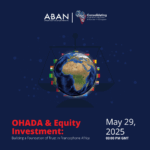One of the key factors that unites entrepreneurship across these geographies is the drive for innovation and the pursuit of opportunities. Entrepreneurs in all countries and regions are constantly seeking new ideas, products, and services that can meet the needs of the market and create value. The desire to solve problems, take risks, and bring about positive change is a shared characteristic among entrepreneurs worldwide.
However, there are also some notable differences. In the US, there is a strong emphasis on venture capital and a robust startup ecosystem that supports high-growth, technology-driven ventures. Silicon Valley, for instance, is renowned as a hub for innovation and entrepreneurship. The UK also has a thriving startup scene, with a focus on sectors like fintech, creative industries, and advanced manufacturing.
In Africa, entrepreneurship often takes a different form due to unique socio-economic and cultural factors. Many entrepreneurs in Africa are driven by the need to address social and economic challenges, such as access to healthcare, education, and necessities. There is a growing recognition of the potential for entrepreneurship to drive inclusive growth and create jobs in Africa. As a result, there has been a rise in social entrepreneurship and impact-driven ventures that aim to make a positive difference in local communities.
Another important distinction is the availability of resources and support systems for entrepreneurs. While the US and the UK have well-established networks of investors, mentors, and incubators, access to funding and support can be more challenging in Africa. However, efforts are underway to bridge this gap, with the rise of angel investor networks, impact funds, and entrepreneurship support organizations across the continent.
Overall, while there are similarities in the entrepreneurial mindset and the pursuit of opportunities, the specific contexts and challenges in each geography shape the nature of entrepreneurship. It’s an exciting and evolving field that can benefit from cross-cultural learning and collaboration.




